Intel Raptor Lake CPUs will launch October 20 with prices largely to match 12th Gen
Intel's Core i9 13900K will square off against AMD's Ryzen 9 7950X next month.

Intel's next-gen Raptor Lake CPUs are headed to our gaming PCs on October 20. The first chips to arrive from the 13th Gen will be K-series chips, favoured by us PC gamers for our gaming machines, and we have high hopes for what they might offer. We already know to expect a significant uplift in both single-threaded and multithreaded performance but Intel has now offered further explanation as to how it hopes to give AMD's recently released Zen 4 processors a run for their money.
At launch, six 13th Gen processors will be available: Core i9 13900K, Core i9 13900KF, Core i7 13700K, Core i7 13700KF, Core i5 13600K, and Core i5 13600KF.
The 'K' chips come with onboard graphics, Intel's UHD Graphics 770, and slightly higher recommended retail price tags ($25 more) than the graphics-less 'KF' versions.
We've heard a lot about these new processors over the past few months, so let's say none of what I'm about to tell you will come as a complete surprise. Although I have been able to speak with a few key folks over at Intel about the upcoming 13th Gen architecture/CPUs, and there are some less talked about improvements that might be of interest to the budding PC gamer.
First off, Intel is promising a varied uplift in gaming performance over its last-gen Alder Lake processors. Somewhere between an impressive 1.2X improvement in games such as League of Legends or Rainbow Six: Siege through to generally higher fps in most titles tested internally by the company. With gaming workloads preferring single-threaded performance, and Intel touting up to a 15% increase there, these benchmarks fall roughly in line with our expectations.
However, Intel does also note a slight decrease in performance in games like Horizon Zero Dawn and Metro Exodus.
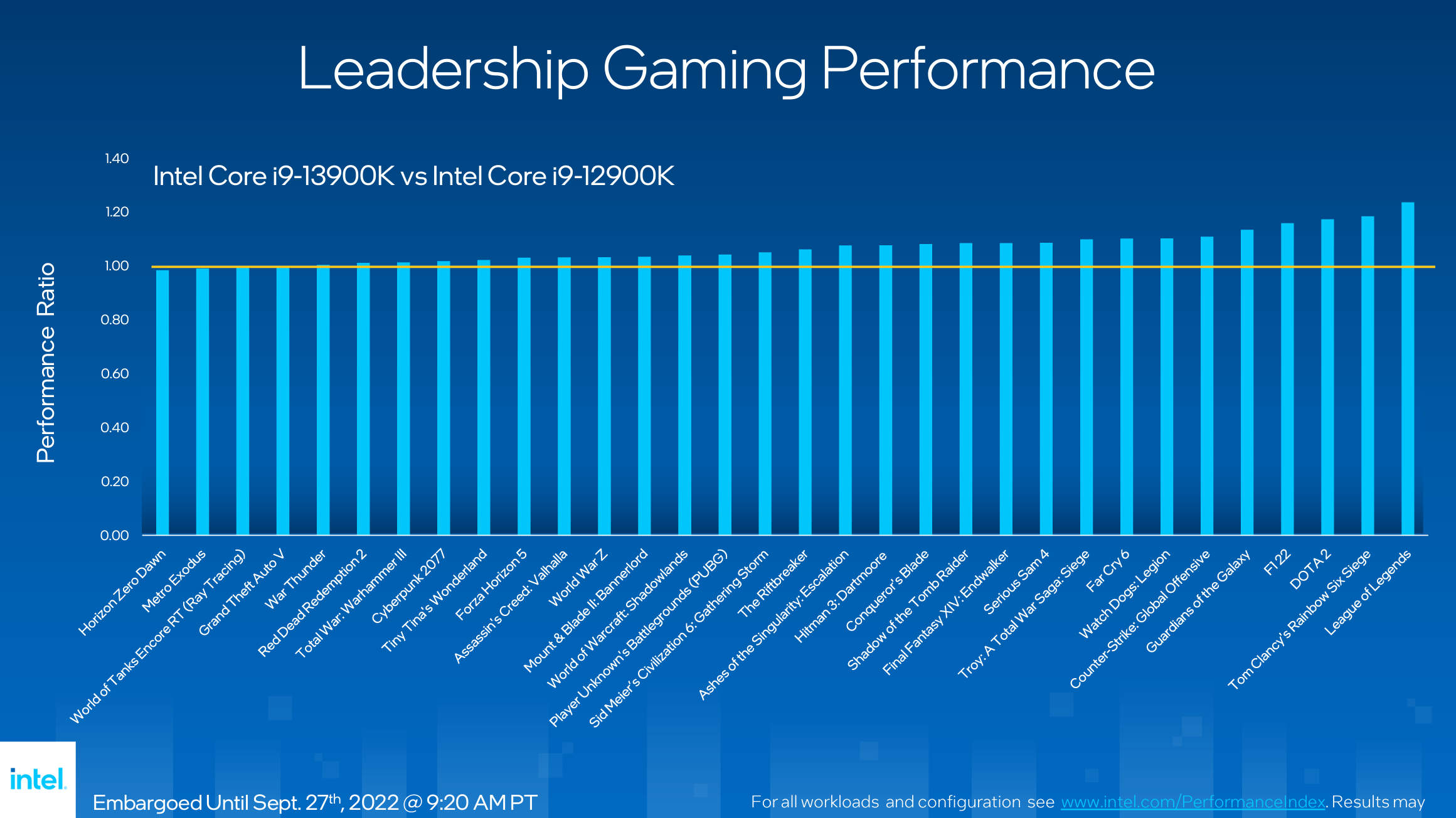
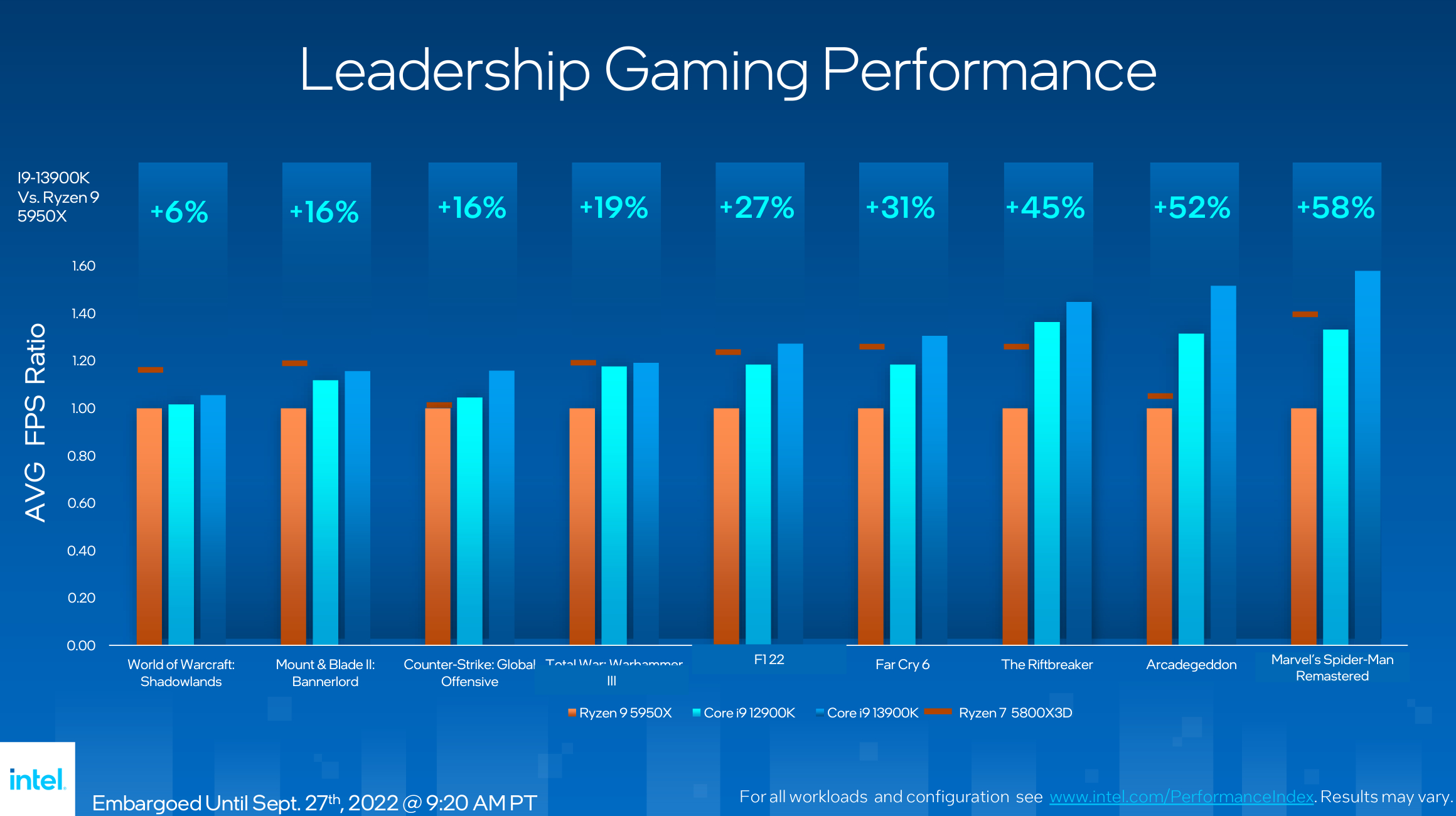
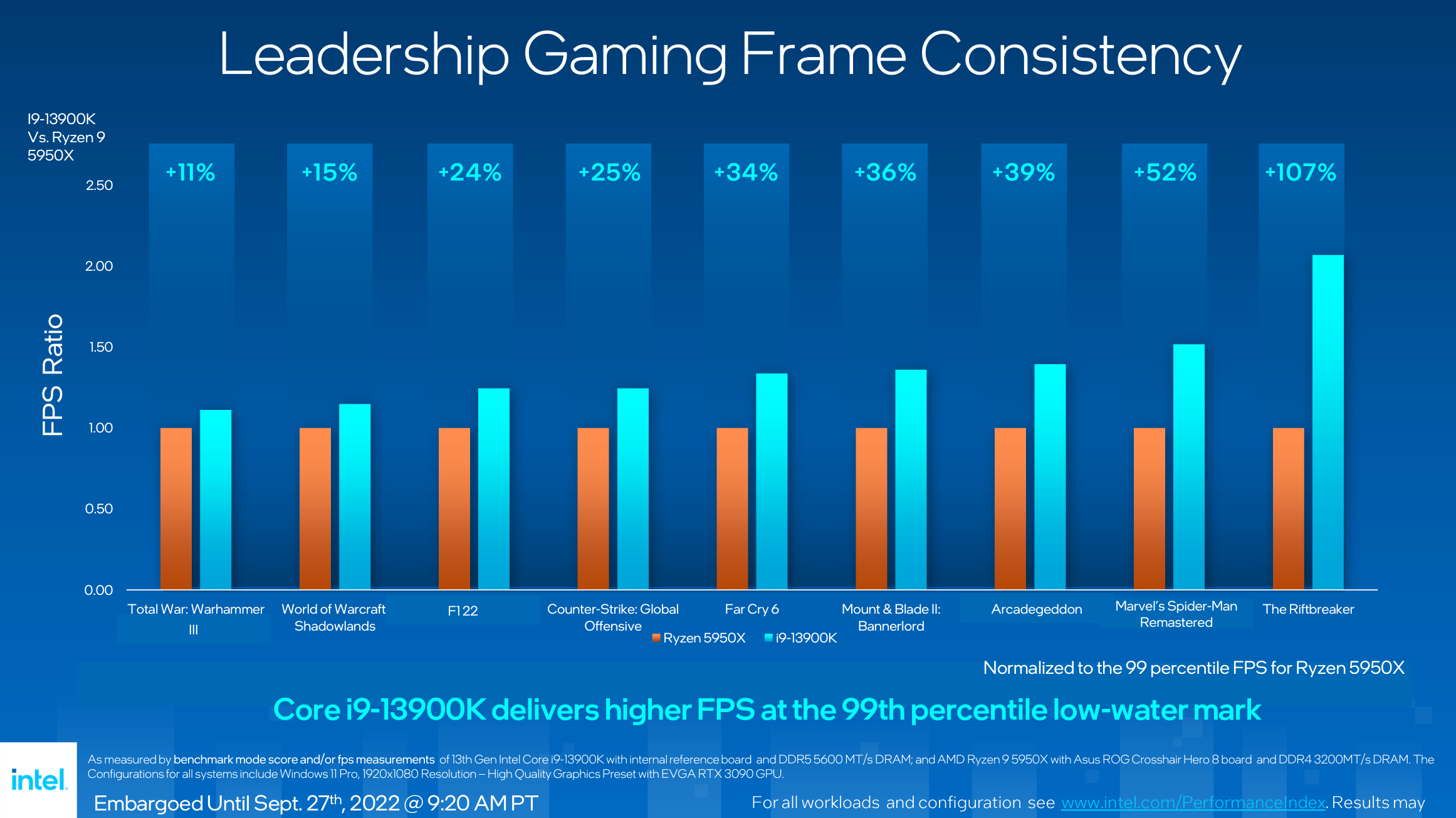
I had a chance to chat to Marcus Kennedy, general manager of gaming, creator, and esports, ahead of the Intel Innovation event and asked him why we're seeing that dip, and he largely chalked it up to game releases and updates perhaps not playing as nicely with the increase in Efficient-cores (E-cores) on these new 13th Gen new processors. He also cited potential bugs or simple benchmarking variance as potential causes.
The biggest gaming news, reviews and hardware deals
Keep up to date with the most important stories and the best deals, as picked by the PC Gamer team.
"If you looked at that same graph when we got our A0 silicon 13th generation (early test sample), it was way more all the way to the left. We expect, by and large, that games will all take advantage of the increased performance and increased cores, faster frequency, all of that, without seeing regression."
We'll be getting these chips in for review and Metro Exodus is in our benchmarking suite, so we'll be able to test this for ourselves soon enough, anyways.
We know that there's a ton of headroom in these bad boys.
Marcus Kennedy
Generally, it appears as though Intel will manage to sustain top gaming performance ahead of AMD's Zen 4 processors with the 13th Gen. Again, it's something we need to test for ourselves, but seeing as neither the Ryzen 9 7950X or Ryzen 7 7700X managed to break Intel's Core i9 12900K in gaming in our reviews of those two chips, there's no real question that the faster 13900K will manage the same, too.
Though it's worth mentioning we have no direct comparison from Intel yet, as its benchmarks above were carried out using AMD's Ryzen 9 5950X and not its latest lineup (which weren't out at the time).
Kennedy also tells me Intel expects zero issues with game compatibility on Raptor Lake on release, as those issues have been all patched out since Alder Lake's release with the hybrid architecture in tow.
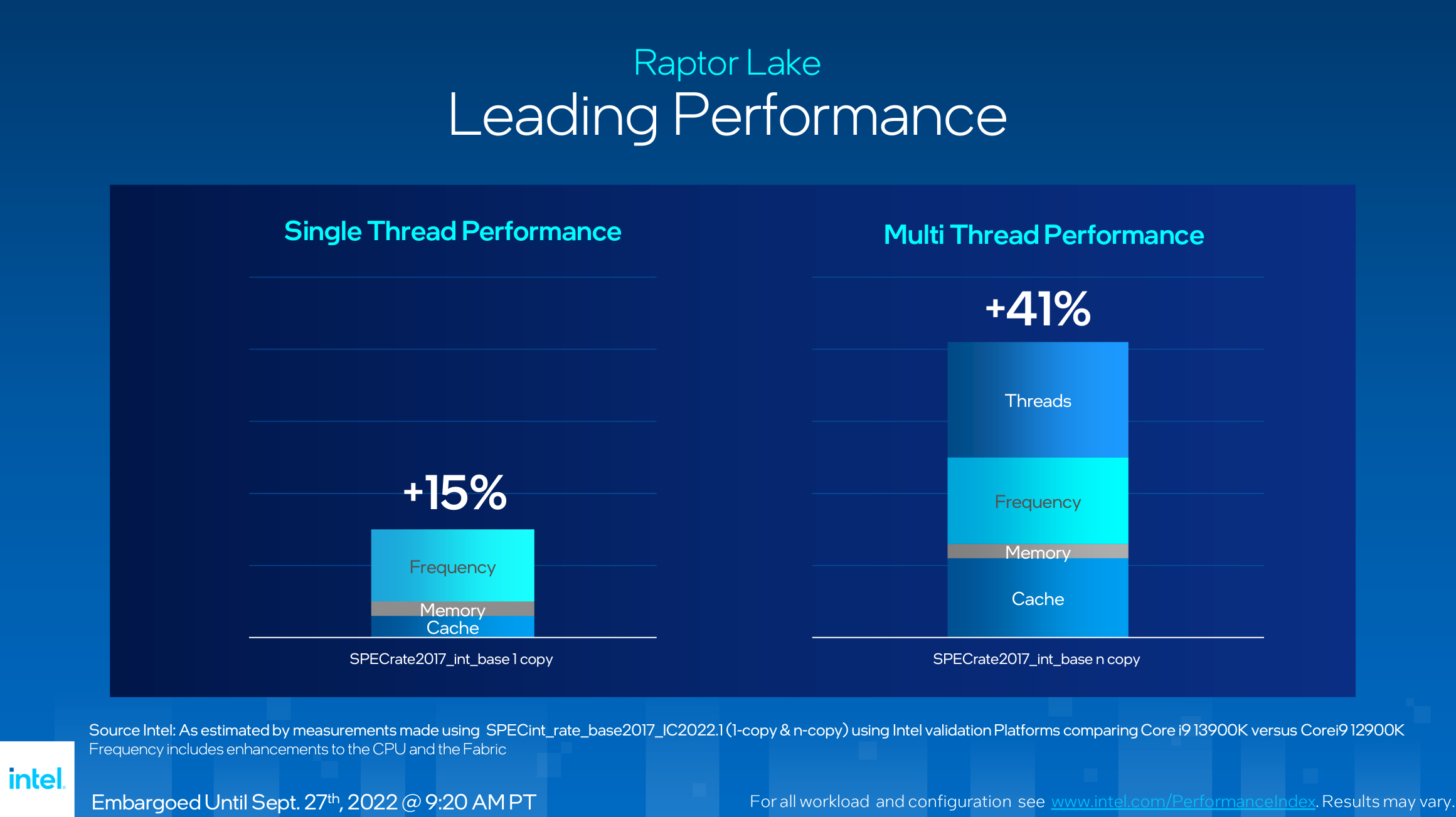
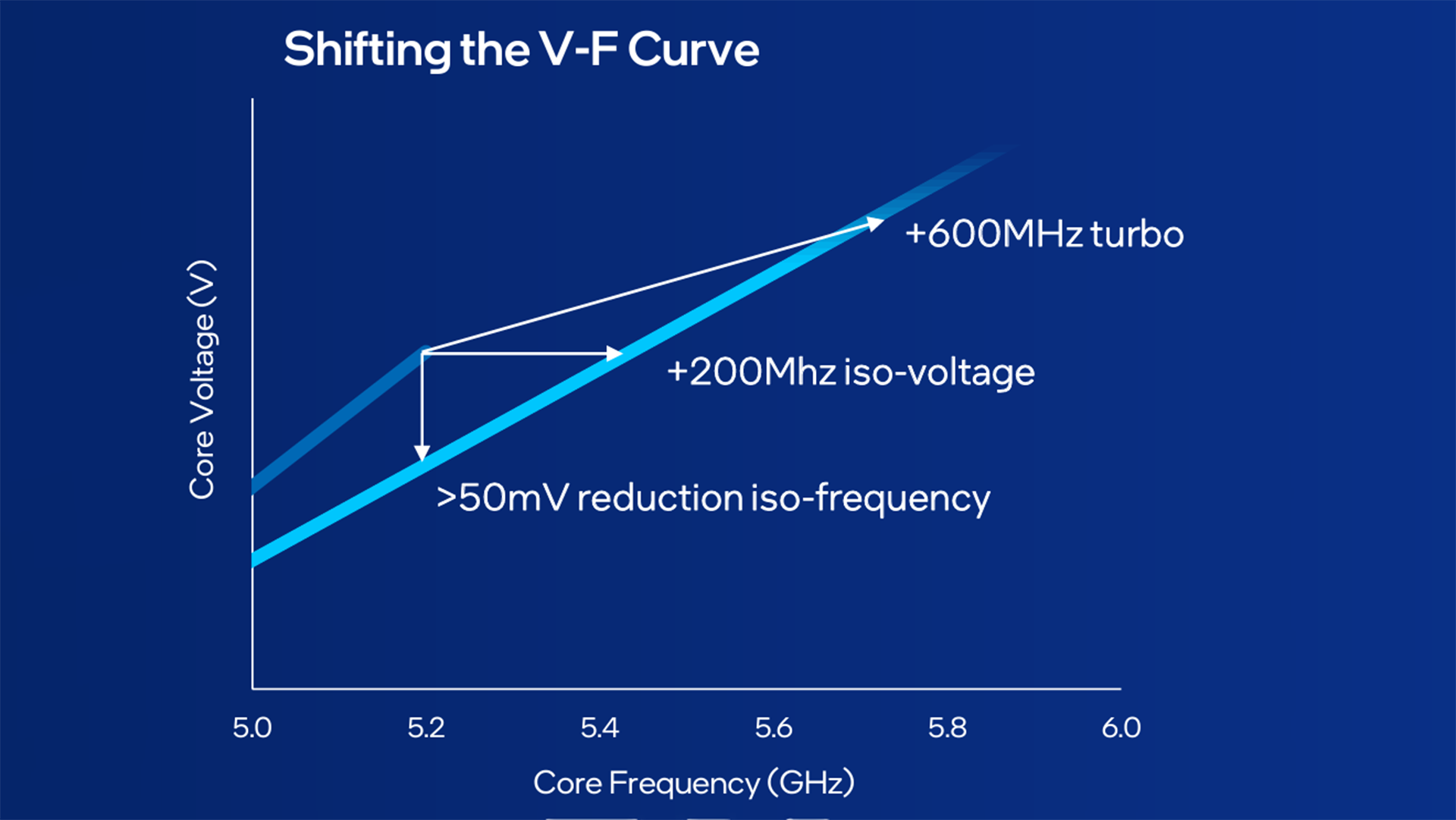
Faster P-cores are clearly a big part of that performance uplift with Raptor lake, as you can see in the graph above. With the Core i9 13900K managing up to 5.8GHz out of the box. For reference the Core i9 12900K managed to hit 5.2GHz out of the box, so we're talking a lot more speed here. Intel has also stated that speeds of over 6GHz should be well within reach for these chips, and beyond that, with LN2, over 8GHz. At least that I can attest to that myself, as during a recent trip to Intel's Haifa lab in Israel I watched a top overclocker hit 8.1GHz on an Intel Core i9 13900K (and reportedly 8.2GHz earlier that day).
"We know that there's a ton of headroom in these bad boys, so you'll be able to crank it as high as you want, as long as you've got the thermals, as long as you've got the right cooling, we expect a lot of world records to fall," Kennedy tells me.
That's partially down to the new Raptor Cove Core design, which is built to offer improved speed paths over the Golden Cove Core design with Alder Lake, but also a slightly upgraded Intel 7 process, which Intel says offers better channel mobility. Intel's Dan Rogers, senior director of mobile product marketing, says that Intel has been able to shift the V-F curve (Voltage/Frequency) for Raptor Lake to offer better performance at high and low voltages, and further improvements to the memory subsystem and ring frequency helps reduce latency for greater gaming performance.
"This lower latency path to memory is critical for game performance, delivering 5% faster frame rates on average, just for this memory upgrade," Rogers continues.
Intel says a smaller portion of Raptor Lake performance comes down to an increase in L2 cache per core. The Core i9 13900K comes with 32MB of L2 cache in total, another big uplift over the Core i9 12900K which had less than half that at 14MB. That's 4MB per cluster of E-cores and 2MB per P-core. The L3 cache on the Core i9 13900K is also increased to 36MB.
A new dynamic caching policy called INI will see Raptor Lake swap between inclusive and non-inclusive caching where required, including in games, through machine learning and telemetry data.
| Header Cell - Column 0 | Core i9 13900K | Core i7 13700K | Core i5 13600K |
|---|---|---|---|
| Cores (P+E) / threads | 8+16 / 32 | 8+8 / 24 | 6+8 / 20 |
| L3 cache | 36MB | 30MB | 24MB |
| L2 cache | 32MB | 24MB | 20MB |
| P-core Turbo clock / base clock (GHz) | 5.8 / 3 | 5.4 / 3.4 | 5.1 / 3.9 |
| E-core Turbo clock / base clock (GHz) | 4.3 / 2.2 | 4.2 / 2.5 | 3.9 / 2.6 |
| Unlocked | Yes | Yes | Yes |
| Graphics | Intel UHD Graphics 770 | Intel UHD Graphics 770 | Intel UHD Graphics 770 |
| Total CPU PCIe lanes | 20 | 20 | 20 |
| Max memory speed | DDR5 5600, DDR4 3200 | DDR5 5600, DDR4 3200 | DDR5 5600, DDR4 3200 |
| Processor Base Power (W) | 125 | 125 | 125 |
| Max Turbo Power (W) | 253 | 253 | 181 |
| Recommended Customer Pricing (RCP) | $589 | $409 | $319 |
| RCP for KF version (no iGPU) | $564 | $384 | $294 |
Further to speedier Performance-cores (P-cores) useful for gaming, Intel is increasing core counts with the 13th Gen. We're talking about an increase in E-cores here, up to eight more E-cores per chip, which will run at up to 600MHz faster than Alder Lake. That makes for more cores available to your OS to offload background tasks and less critical operations while you're gaming or for more multitasking chops while you're doing other things.
"Our E-cores now achieve both the IPC and the frequency of our original Skylake 14 nanometer cores at a considerably lower power," Rogers says.
A big part utilising these E-cores in Intel's hybrid architecture, first introduced with Alder Lake and the 12th Gen, is what it calls the Thread Director. This works with the OS to help provide information necessary for the OS to better decide how to divide up work between the P-cores and E-cores. The Thread Director is receiving an upgrade with the 13th Gen, with updated thread class boundaries via machine learning techniques, better thread classification, better handling of low quality of service tasks, and the ability to differentiate between user-initiated tasks and background ones. According to Kennedy, this upgrade, which is in further collaboration with Microsoft on Windows 11 and included in the new Windows 11 update, should see Thread Director simply "run better in general."
This lower latency path to memory is critical for game performance.
Dan Rogers
The increase in E-cores with Raptor Lake makes the Core i9 13900K something of a multithreaded monster, with 32 threads available to it. Though the increase in cores could also make a big difference to gen-on-gen performance further down the stack.
The Core i7 13700K will ship with as many cores as the Core i9 12900K yet will come with the same recommended retail price as the Core i7 12700K at $409. The Core i5 13600K also features four more E-cores than the Core i5 12600K, however, is priced slightly higher than its predecessor at $319.
As we've seen with previous Intel generations, the cheaper chips in the lineup should make for mean gaming processors, but it's there that Intel will need to be the most competitive. AMD's Ryzen 7 7600X is shaping up to be a big improvement on the popular Ryzen 5 5600X, and so Intel will need to bring its best to market to compete.
Though this time AMD, and by extension PC gamers, doesn't have the benefit of a far cheaper platform versus Intel. With AMD's long-standing AM4 platform and backwards compatibility, and Intel Alder Lake requiring a new motherboard for compatibility, AMD's cheaper chips appeared the better overall buys once you considered the entire PC build. Whereas with the Ryzen 7000-series, AMD has shifted to the new AM5 socket, requiring a new motherboard, and has ditched DDR4 support. That means it's pricier DDR5 memory for AMD's option or bust.
Intel's Raptor Lake platform may prove slightly cheaper with existing 600-series motherboards already in the market, and with support for the cheaper DDR4 memory standard, though we'll have to see how launch day prices work out. Supply for all these chips will be a major determining factor in their actual on the shelf retail prices, and I'm cautious to say either one will be cheaper in the long run so soon after launch.
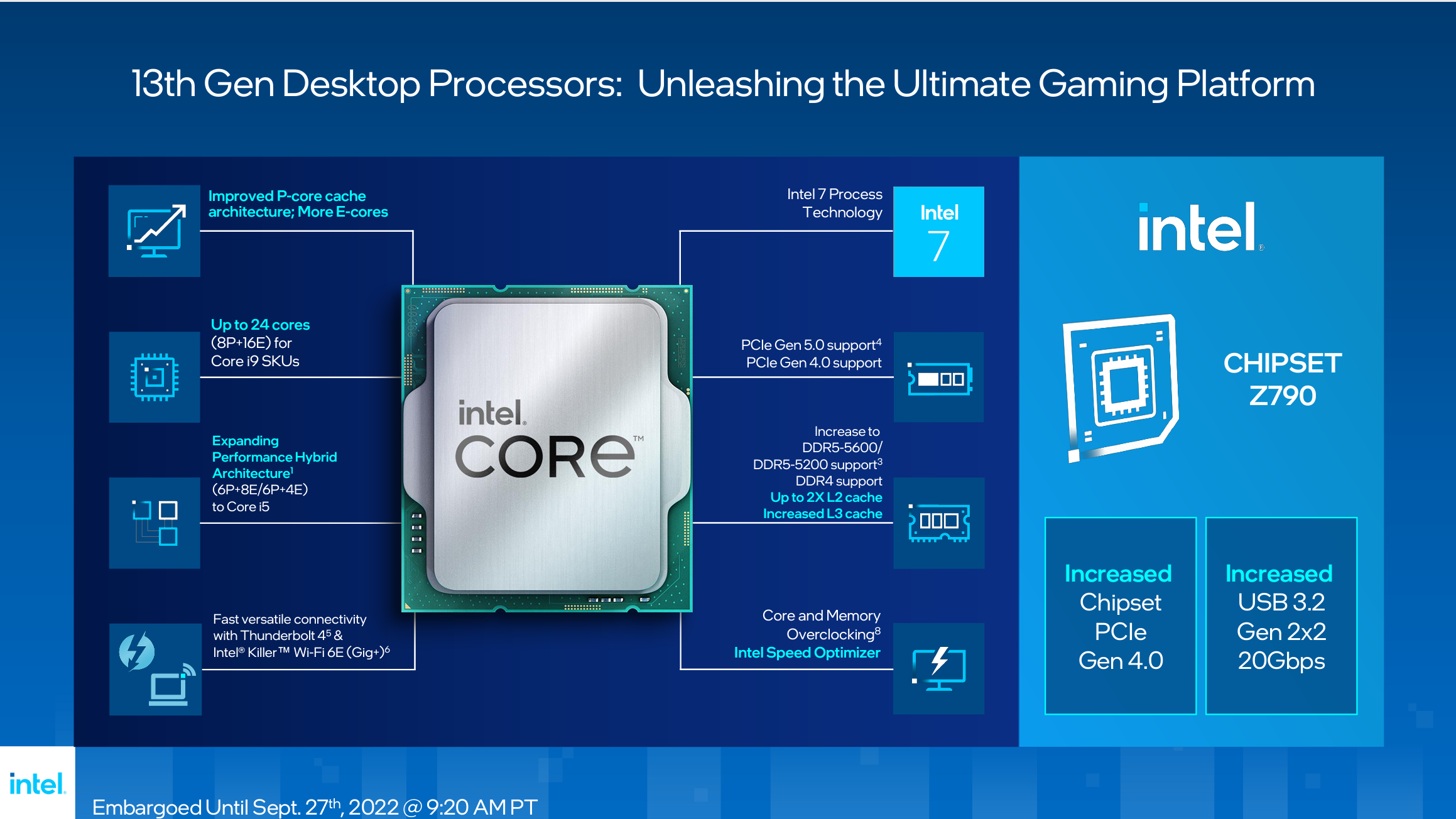
If you're more focused on performance and less on affordability, there are also new Z790 chipset motherboards launching alongside Intel's new 13th Gen processors. Asus, Gigabyte, ASRock, MSI, and more are all planning pretty serious high-end boards at launch, and I would suspect that cheaper boards are to follow.

Best CPU for gaming: The top chips from Intel and AMD
Best gaming motherboard: The right boards
Best graphics card: Your perfect pixel-pusher awaits
Best SSD for gaming: Get into the game ahead of the rest
The new Z790 chipset offers a few upgrades, namely up to eight more chipset PCIe 4.0 lanes and up to five USB 3.2 Gen 2 ports. The exact configuration of a Z790 motherboard will vary, but I imagine the top boards will take advantage of some of these new options.
Yet even with this new information from Intel today there's still a lot to consider when choosing between Intel and AMD for your next PC build, and we've only half the picture. We need to test for ourselves to know which we'll recommend for the next year or perhaps more, but it already looks to be a close race between the two. Whichever CPU ends up as the best CPU for gaming it will be an immense chip, that much is certain.
It comes down to a consistently competitive AMD versus a resurgent Intel: whoever comes out on top, it's a great time to be upgrading your CPU. Or at least at the very high end, we'll have to wait longer for the more affordable options.

Jacob earned his first byline writing for his own tech blog. From there, he graduated to professionally breaking things as hardware writer at PCGamesN, and would go on to run the team as hardware editor. He joined PC Gamer's top staff as senior hardware editor before becoming managing editor of the hardware team, and you'll now find him reporting on the latest developments in the technology and gaming industries and testing the newest PC components.

